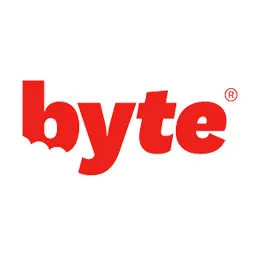Comparing the Best Mail-In Teeth Aligners

Table of Contents
- Comparing the Best Mail-Order Aligners in 2023
- Pros & Cons
- Mail-In Aligners vs. Invisalign
- Visiting Orthodontist for Teeth Alignment
- Frequently Asked Questions
- Do Mail-In Aligners Work?
At-home clear teeth aligners are rapidly growing in popularity. Just as more people are opting for greater convenience in their shopping and health routines, many also see mail-order teeth straightening aligners as a win-win. They can enjoy the results and cutting-edge technology of clear aligners with the convenience of at-home treatment.
This also means there are more mail-order clear teeth aligners on the market. Choosing the right product and service can make all the difference in your results and aligner experience, so it's important to research and find the right provider.
Byte’s at-home clear aligners are doctor directed. Impressions you make at home are used to design a personalized treatment plan approved by a licensed dentist or orthodontist.
Comparing the Best Mail-Order Aligners in 2023
Many companies want to sell you aligners. Which should you choose?
The best teeth straighteners come from the four companies we'll discuss in depth in the sections below. Read about the different types of clear aligners, and make a choice that's right for your smile.
| Byte | Candid | ALIGNERCO | SmileDirectClub | |
|---|---|---|---|---|
| Mail order or in-office impressions? | Mail-order | In-office | Mail-order | In-office or mail-order |
| Average length of treatment | 4 months | 6 months | 4–6 months | 4–6 months (22-hour per day wear)8-10 months (nighttime wear) |
| Cost | $2,099 + $95 (impression kit) | Varies per patient (hypothetical cost provided on website is $3,500) | Starting at $895 | $2,050 + $59 (impression kit) |
| Maintenance and guarantees | Byte for Life guarantee, offering another evaluation and aligners for shifted teeth | No. Any agreements are made between CandidPro provider and patient | $499–$599 WorryFree Protection Plan for retainer replacement | Lifetime Smile Guarantee provides aligner touch-ups during treatment and yearly touch-up aligners for those who have purchased replacement retainers ($99) every 6 months and worn them as prescribed |
| Standout accessories and products | Science-backed HyperByte high-frequency vibrational device to promote fast, effective results and minimize discomfort | CandidMonitoring tools for virtual check-ins with CandidPro doctor | No frills, but describes their aligners as customized, handcrafted, and comfortable | Comfort Sense technology for comfortable fit |
Pros & Cons of Mail-Order Aligners
Whether you call them mail-order braces, braces by mail, or mail-in aligners, these products can be right for some people who want to change their smile. But they do come with some drawbacks you should know about.
| Pros | Cons |
|---|---|
| Less painful | Not always covered by insurance |
| Treatment can be completed from home | Relatively new devices |
| Can be more cost-effective | May not be as effective as braces |
| Support staff often readily available | No in-person consultations or checkups |
Do mail-in aligners work?
Mail-in aligners are medical appliances created from scans and impressions of your teeth. Typically, they’re made of a clear plastic material that wraps around your teeth from the tip to the gumline. While they’re not right for everyone, research suggests they could be helpful for many people.
In a study published in 2021, researchers surveyed 470 people who were either currently using mail-in aligners or had done so in the past. They found that the majority of people were either very happy (43.1%) or somewhat happy (44.4%) with their treatment programs.
The researchers also found that people using aligners for mild issues like crowding or gaps were more likely to be happy than those using the tools for significant problems, such as a poor bite.
Studies like this demonstrate why the assessment phase of treatment is crucial. It’s important for your treatment team to check your mouth carefully and ensure this type of care is right for your smile. If you need more help than aligners can provide, your treatment team should tell you this clearly.
Mail-In Aligners vs. Invisalign
Invisalign by mail isn't a product anyone can buy. While Invisalign uses clear aligners to straighten teeth, they're managed in a series of in-person appointments with a dental professional. The trays are similar, but the treatment process is very different.
When comparing Byte and Invisalign, cost differences become clear. The at-home model means you’re not required to subsidize office space and equipment. Your costs are dramatically reduced as a result.
But for people with significant dental issues, in-person visits could be an important part of the treatment process. A dental professional might need to examine your smile in person to determine what should happen next. And an in-person option allows you to switch to conventional braces if needed.
When Should You Visit an Orthodontist for Teeth Alignment?
In-person orthodontic treatment isn't required for every person. Some get by just fine with at-home aligners to straighten their teeth. But there are some scenarios in which it's best to visit a conventional dentist to get help with your teeth.
Those scenarios include the following:
Extreme teeth misalignment: Very misaligned teeth often need more help than at-home aligners can provide. If your teeth are far out of place, you may need traditional braces to treat them.
Jaw misalignment: A significant overbite, underbite, crossbite, or other issues can benefit from braces and other orthopedic appliances. Jaw misalignment treatment isn't possible with all aligner products.
Jaw pain: Some types of jaw pain stem from significant dental issues that could be treated with braces or dental appliances.
Gum and teeth pain: Some oral pain, including pain in your teeth, could get better with traditional orthopedic appliances.
Missing teeth: Significant gaps between your teeth, caused by one or two missing molars, might need more help than aligners can provide.
Misaligned molars: Few aligner treatment plans move molars. If these teeth need to move, you may need to visit an orthodontist.
Mail-Order Aligner Frequently Asked Questions
These are some of the questions people often ask about mail-order teeth aligners:
*Preliminary clinical studies of small groups of users have shown that daily recommended use of a high-frequency seating device functionally equivalent to HyperByte with clear aligners may help with comfort and speed of tooth movement.
